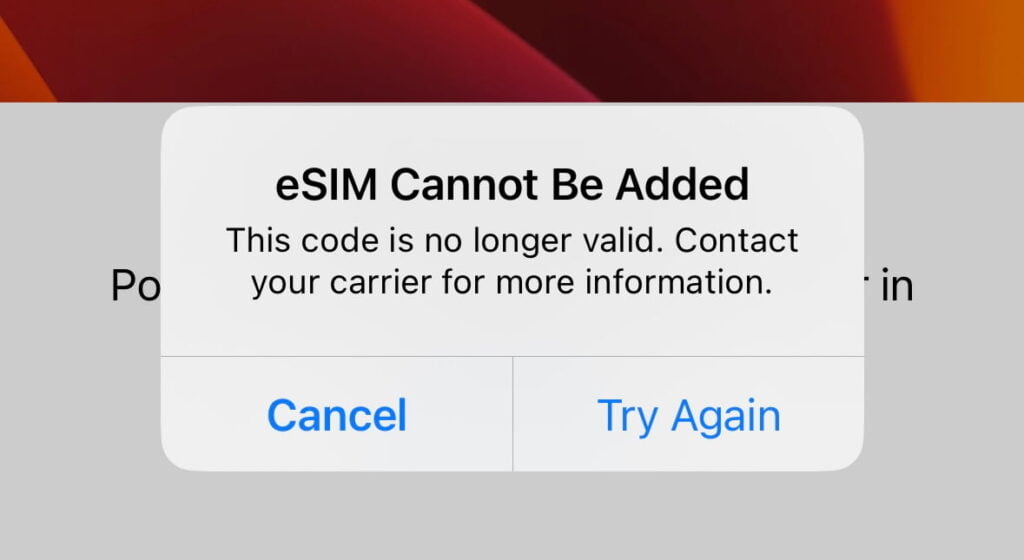The promise versus the reality of eSIM
With eSIM, connecting to mobile networks has, in theory, never been easier. Just download an app, sign up, click to download your eSIM, and you’re ready to go. It’s simpler than switching a physical SIM… right? Well, maybe not for everyone.
In my view, eSIM is more straightforward (but I have worked with eSIM for nearly ten years). The reality for many is that it’s only more straightforward if you understand that your SIM card is now a digital download. For many users, especially those purchasing domestic mobile services, the lack of a physical SIM can still be confusing. Research from GSMA Intelligence shows that many people are still unfamiliar with eSIM (as of the last research, only around 35% have heard of eSIM).
When I’ve walked friends—especially those who travel for work—through buying and installing an eSIM in just a few minutes, they’re amazed! To them, it feels almost magical, especially for those who’ve always relied on plastic SIMs. But that is with me guiding them through the process – there would be more of a barrier if they did it alone, for the first time.

It’s not that simple for everyone
The eSIM process is still not that simple for everyone. For travel-related eSIMs, where users are actively aware of eSIM, and they set out to buy one, then the barrier is lower. But for domestic mobile services, when customers are swapping devices or changing networks, the lack of familiarity with eSIM and clunky eSIM implementations (think eSIM QR codes in password-protected PDFs etc) can be frustrating.
Two areas can make a significant difference in eSIM adoption are:
- Improving how mobile operators educate customers and implement their eSIM products.
- Enhancing the eSIM experience on the device itself (controlled by Apple, Google etc).

Embrace a fully digital vision
At Mindszi, we focus on the first point. My colleague, Michael Moorfield, and I are passionate about helping mobile operators enhance their eSIM experience. In the past, we built Consumer, Enterprise, and IoT eSIM solutions, often ahead of their time. However, we always felt constrained – the shorter or simpler customer experience we wanted on the front end was directly proportional to creating a more complex enabling ecosystem on the backend. Often, this constrained our speed or time to market.
It’s a problem worth solving – building an easy-to-use digital experience makes it far easier for new customers to switch to your mobile network or, through a great customer support experience, be motivated to stay. Winning new domestic customers and retaining existing customers is worth it – a one or two-percent capture of new customers can be worth hundreds of millions a year in top-line revenue.
That’s why we built the Mindszi platform—a SaaS solution that dramatically simplifies the sales, distribution, and support of eSIM services. It is designed to either stand-alone or easily feed data to and from existing telecom APIs or ecosystems.
Our platform enables different types of eSIM experiences to target specific use cases or customer segments. It enables the MNOs or MVNOs to move quickly to create sales, acquisition, IoT or support experiences – without slow and costly projects.
We also cover use cases for Enterprises, allowing them to easily work directly with eSIMs for their employees or connected devices.
Building a fully digital MVNO: Slice mobile’s eSIM-only journey
Recently, we helped Slice Mobile launch an eSIM-only network in the UK. Mindszi provided the eSIM orchestration platform, while Planes Studio designed the user experience and mobile apps.
Here are five key takeaways from how Slice built a top-tier eSIM experience:
- App only vision – Slice’s approach is fully digital—no physical SIM, no contracts, no phone support, no credit checks. The app offers a seamless experience, including live chat support, and you can start with a free trial in just minutes.
- Offering something different – Slice treats the customers like owners by getting them involved in initiatives to create a better network. In return the customers are rewarded with things they want. Cool idea.
- User experience – Slice invested in a top-notch UX designed for people who want to manage things through an app. It was app first, not the website – the website today sends users to the app. Few domestic operators focus solely on a fully digital mobile service. Slice recognised this opportunity in the UK – customers can switch to Slice and get live onto their mobile network in about 2 minutes.
- Automation – Mindszi guided Slice through the complexities of building an eSIM-only network. We ensured a smooth customer journey could technically be achieved by managing all service enablement, network provisioning, and payment processing behind the scenes.
- Extensibility – Slice wanted flexibility to work with various external SaaS tools. Mindszi’s event-based platform allows Slice to easily integrate and work with external SaaS tools with just a few clicks. Everything is real-time, so gone are the days of mega integration projects to enable new services or features provided by 3rd party platforms.

eSIM is here to stay, but it requires innovation
In conclusion, eSIMs can make buying or switching mobile connectivity providers simpler, but not everyone is aware of or ready to use eSIM today. The real game-changer for better eSIM adoption is not to replicate, like for like, the processes in the physical SIM world – make the eSIM sales and support experience more digital and guided.
Build real-time eSIM data into your support processes, and critically ensure your eSIM orchestration platform gives you the flexibility to enable different eSIM sales journeys that can meet the needs of a broad customer base.


